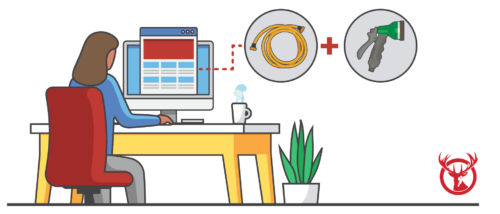Even before a global pandemic of a novel coronavirus sent people into lockdown in early 2020, online sales were growing steadily. According to U.S. Census data, between the beginning of 2012 and the end of 2019, the eCommerce share of retail doubled from 5% to 10%. During the pandemic, eCommerce sales spiked to almost 16%. In 2021, brick-and-mortar gained back some ground, but eCommerce’s influence on retail is here to stay. Retailers who heed online sales trends will see their brands grow in a world reshaped by COVID-19.

As shopping trends change, every retailer becomes an eCommerce business
At the start of the pandemic, many local retailers scrambled to develop an online presence to keep sales going when they had to close their physical doors. But the trend of adding a digital element to brick-and-mortar stores wasn’t new. In fact, eCommerce influence on retail had been steadily growing for over a decade. However, if any retailers doubted the importance of adding an online option for their customers, the pandemic ended those doubts.
As we enter the third year of the pandemic and a seemingly endless procession of COVID variants, eCommerce’s influence on retail continues to grow. Some consumers have returned to in-person shopping. However, the online buying habits they developed during the early months of the pandemic have changed the way they shop. More people are buying things online, accelerating the growth of eCommerce.
The trend toward online shopping means that merchants must expand their worlds to include the elements of remote buying, including eCommerce fulfillment services, warehouse storage, warehouse locations, shipping zones, delivery times, shipping costs, and more. But with this extra work comes a massive opportunity for expansion with access to a broad and worldwide customer base. And that allows you to build your brand, expand your business, and build wealth.
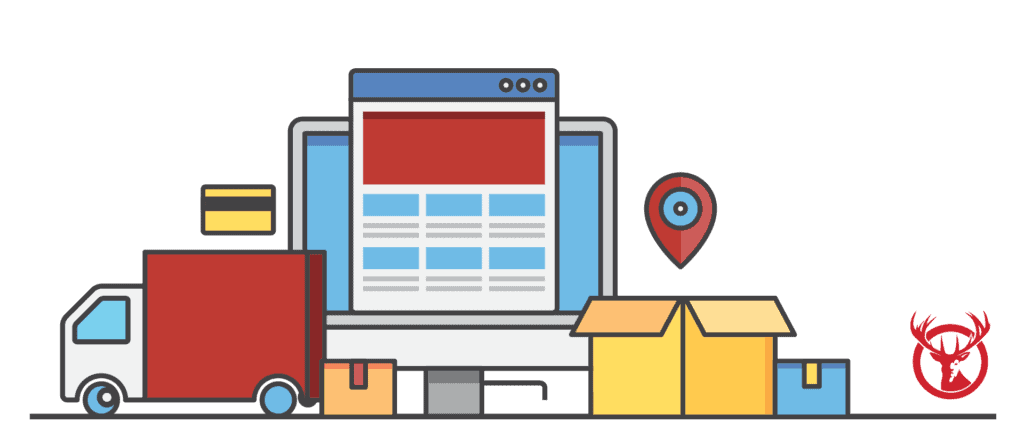
7 things that are helping eCommerce entrepreneurs build wealth
The eCommerce influence on your business can be immensely positive if you reach for the tools that enhance your business. For some retailers, that means software to automate business functions, giving you the capacity to handle a larger volume of transactions and interactions. Or it can take the form of outsourced services such as a customs agent or an order fulfillment provider.
Here are seven ways to use eCommerce to expand and grow. Which are right for your brand?
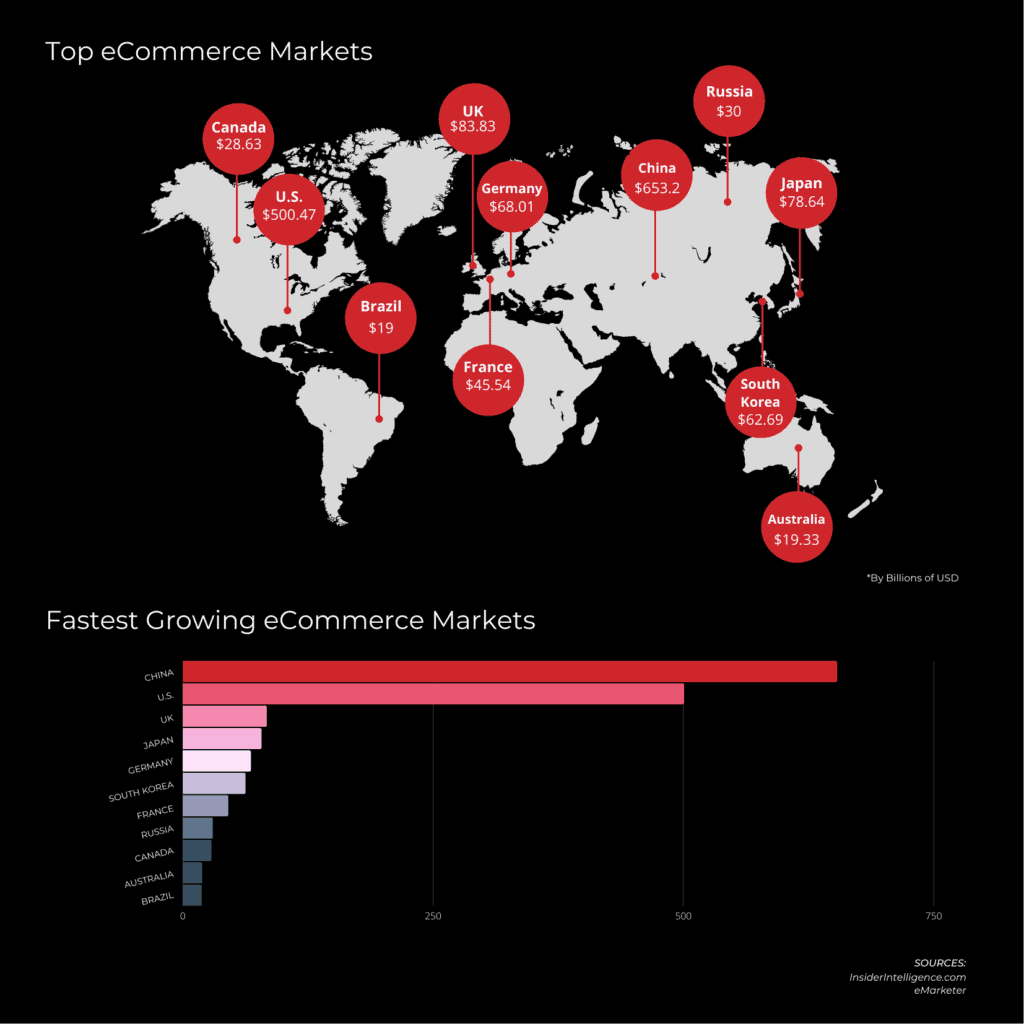
Brand growth – selling across borders
International eCommerce is the ultimate growth market. U.S. Census data showed that online purchases in the United States totaled $870.8 million in 2021. But global eCommerce sales are predicted to reach $5.5 trillion in 2022, so selling across borders is a fantastic engine for brand growth.
What you’ll need: Make sure that your 3PL services include international shipping or a contract with an international carrier such as DHL. As mentioned above, a customs broker may help move customs paperwork faster at the border. And make sure you accept payment methods that work for your customers in other countries.
Who benefits most: Niche products can find a larger market by shipping orders nationally and internationally.
Automation – staying open 24/7
Your online store can do much more than accept orders 24/7. With a chatbot, you can deliver instant customer service at all hours, and integration that lets your store or other sales channel talk to your Shopify 3PL to send your orders to the warehouse so they are ready to pick and pack.
What you’ll need: Chatbot plugins for your website are inexpensive and easy to set up. You can use the bot to answer common questions and refer more complex queries to a human. And make sure the 3PL you choose offers seamless integration with your eCommerce platforms.
Who benefits the most: Every online seller can benefit from apps that automate everyday tasks. Every eCommerce company can find software tailored to its needs from the smallest niche retailer to big global brands.
Multi-channel selling – hitting all the markets
Selling online doesn’t mean setting up a website with a shopping cart, opening a Shopify store, selling on Amazon, or drop shipping products on other retailers’ sites. It means all of the above and more. Expanding your sphere of eCommerce influence requires finding your customers wherever they are online.
What you’ll need: Find a 3PL that offers omnichannel fulfillment so you don’t have to juggle a different warehouse for each channel. And consider software such as Netsuite or CommerceHub that allows you to view all your sales channels in a single dashboard. Unifying your sales and inventory management is essential as you grow and scale your business.
Who benefits the most: ECommerce companies ready to expand to the next level of size, revenue, and eCommerce influence need to pursue multiple sales channels.

Subscriptions – creating predictable revenue streams
Subscription eCommerce is an excellent way to set up an ongoing and somewhat predictable revenue stream.
What you’ll need: Subscriptions often involve sending sets of items to many customers, and a warehouse that offers kitting services can make that process more efficient. Kitting is pre-assembling sets of products before fulfillment. Then the picker only has to pick one SKU to fill each subscription order. Kitting reduces order cycle time and fulfillment errors.
Who benefits the most: Your business is a good fit for subscriptions if you sell a consumable product with regular repeat sales, such as pet food, disposable diapers, razors, or toothbrushes. Consider creating subscription boxes for items like science kits for kids, craft projects, or makeup samples.
Microtargeting – reaching niche consumers with the right messages at the right times
Microtargeted advertising — the ads that follow you around the internet — is a good fit for online stores. ECommerce influence ads can catch consumers at the moment when they think of a purchase and lead to immediate click-through sales. Social commerce is already a $64.8 billion dollar a year retail channel and this is slated to increase to $150 billion by 2029.
What you’ll need: It’s easy to run a targeted ad campaign on social platforms such as Facebook, Instagram, or TikTok and with Google Ads. If you want to run a broader campaign, you might benefit from a media agency that can help you with strategy and make the media buy for you.
Who benefits the most: If you sell specialized or niche merchandise, microtargeting your digital advertising can help you reach the consumers who are most likely to become your customers. You also save money by narrowly targeting your advertising. However, sophisticated microtargeting advertising can benefit a much broader range of online sellers by delivering sales messages when they are most likely to buy.
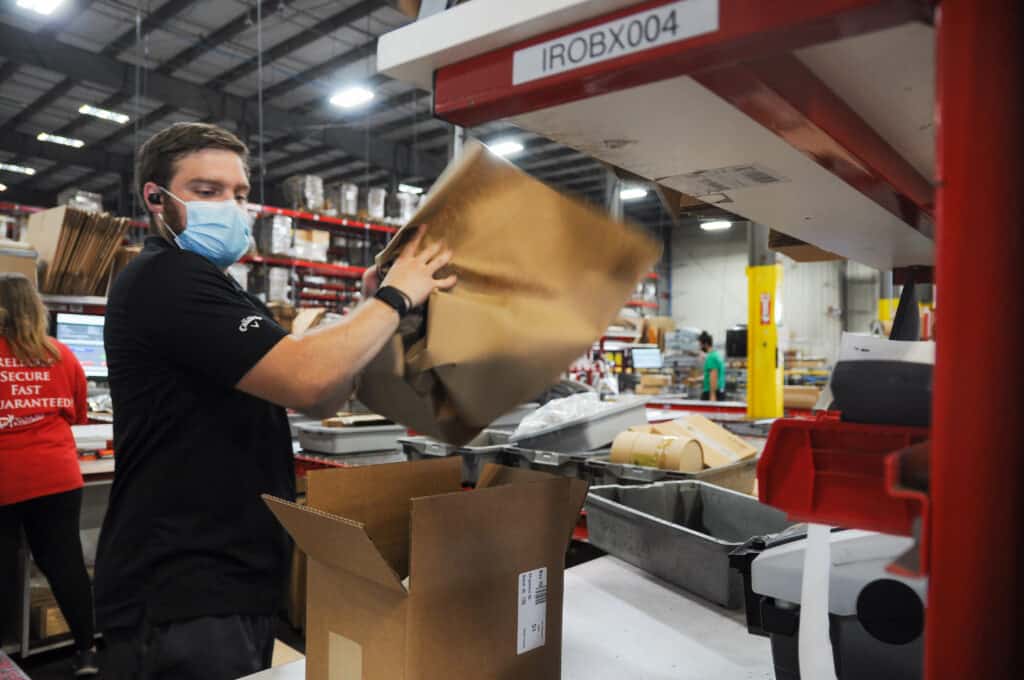
Logistics performance – fast and accurate fulfillment drives sales
If your eCommerce fulfillment is performing well, your customers won’t notice it, and you won’t have to spend much time managing it. But inferior third-party logistics can hurt your sales and deliver bad customer reviews. Look for a 3PL that can process your orders quickly, with low error rates.
What you’ll need: The ideal 3PL has high levels of accuracy, ships orders on time and in full, and offers fulfillment guarantees. One fulfillment company that meets all those criteria is Red Stag Fulfillment. But there’s one more essential factor: Pick a fulfillment center with experience handling products like yours and orders similar to yours. That experience can make a huge difference in protecting your inventory and avoiding shrinkage.
Who benefits the most: Some companies have enough eCommerce influence that slow delivery is part of the brand’s cachet. But, for companies with the kind of growth that helps eCommerce entrepreneurs build wealth and security, outstanding fulfillment is the secret sauce of success.
Retargeting and email marketing – keeping loyal customers close
Your best future customers are your past customers or people who have visited your site. But online shoppers don’t wander by your storefront, so you need to bring the storefront to them. Retargeting ads reach out to people after they leave your site. You can use retargeting to offer an incentive to lure someone back or turn an abandoned shopping cart into a sale. And encourage visitors to join your email list, then use email marketing to entice people with advance access, special discounts, and information about new product releases.
What you’ll need: There are many retargeting apps, and the software will automate customer follow-up. You can use a platform like Mailchimp or Constant Contact to manage and communicate with your list for email marketing.
Who benefits the most: Retargeting and email marketing can extend the eCommerce influence of almost any online store. Tailor your messaging and brand voice to fit your customers and your products, and keeping your customers close will work for you.
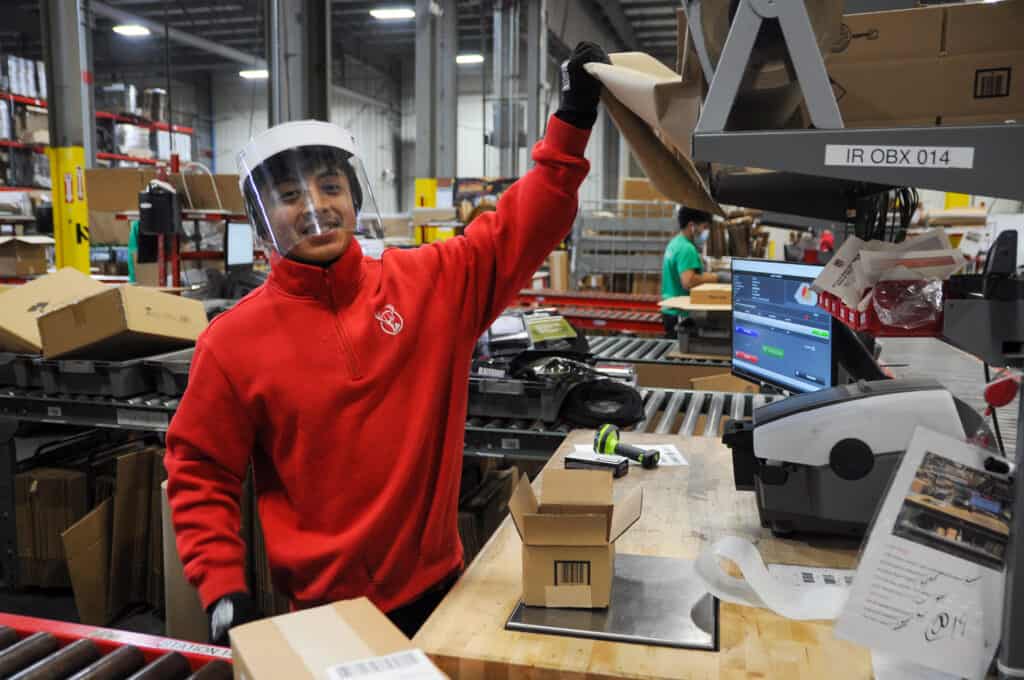
Choosing the right partners is essential to brand growth
You can’t expand your eCommerce influence on your own, but you don’t necessarily need to staff up to grow your business. You just need the right software and the right partners to facilitate your expansion.
At Red Stag Fulfillment, we take our partnerships with our clients seriously. We know that our work impacts your business’s sales and reputation, so we handle every order with care and commitment. That devotion to continuous improvement and impeccable service has turned Red Stag into an industry leader in eCommerce fulfillment. Give us a try—you won’t be disappointed.
More about eCommerce and the pandemic:
- What Does Safety Stock Mean in the Era of COVID-19?
- How Russian Sanctions May Impact Global Supply Chains
- ECommerce Returns During the Pandemic







